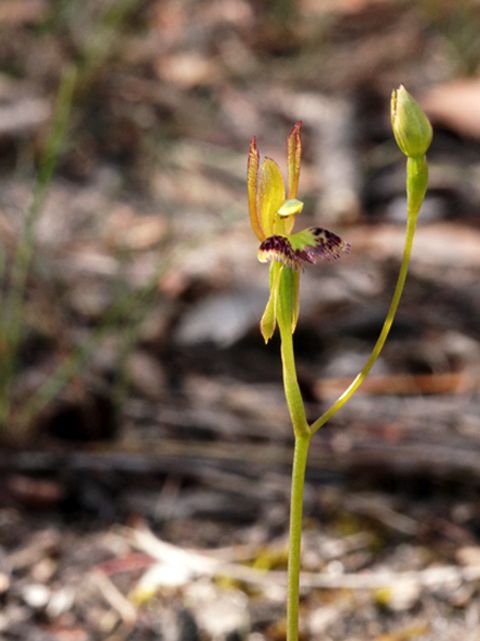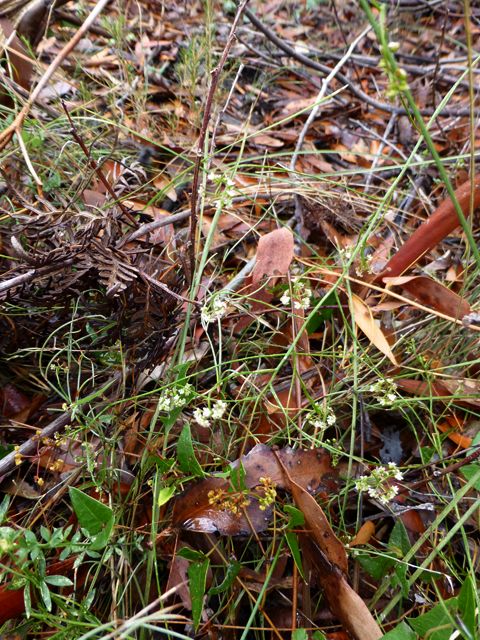A group of five set out after the misty rain had cleared on a nature ramble along the old Surf Coast Loop walk, west of Fraser Avenue Reserve.

The fresh smell of the bush was delightful, the glistening rain drops hung like ‘jewels’ from the foliage and spider webs. The area had undergone a burn within the past twelve months, and it was interesting to note the number of small plants that were coming up.

Spider web
It was a treat to stumble across a small patch of Fringed Hare Orchids Leporella fimbriata at the start of the track, another of our plants which flower prolifically after fire. The erect petals and prominent fringed labellum make for easy identification of this orchid.

The Grass-trees, Xanthorrhoea australis, are thriving after their ‘fix’ of smoke from the burn, masses of small creamy-white flowers forming along a spike which is 30-50cm long, and attracts butterflies. We noted the female Common Brown around the flowers, together with many bees.

Grass-tree
The Dwarf Boronia, Boronia nana var. nana, a slender trailing plant, had a few remaining flowers, which are small with four-petals and waxy white or pale pink in colour.

Another of the scrambling perennials found was the Slender Platysace, Platysace heterophylla var. heterophylla with its tiny, lacy creamy-white star like flowers at the end of long slender stalks.

Slender Platysace
The bright green new leaves of the Victorian Smoke-bush, Conospermum mitchelli, stood out. This species is quite spectacular when in flower, the greyish-white flowers appear in spring and summer.

Victorian Smoke-bush
In contrast the Monotoca scoparia, Prickly Broom-heath has stiff prickly dark green leaves and small creamy flowers in late autumn. As yet the male and female flowers that develop on separate plants were still in tight bud.

The plant list for this short walk can be found on file at the Angair Office.
Yvonne Coventry